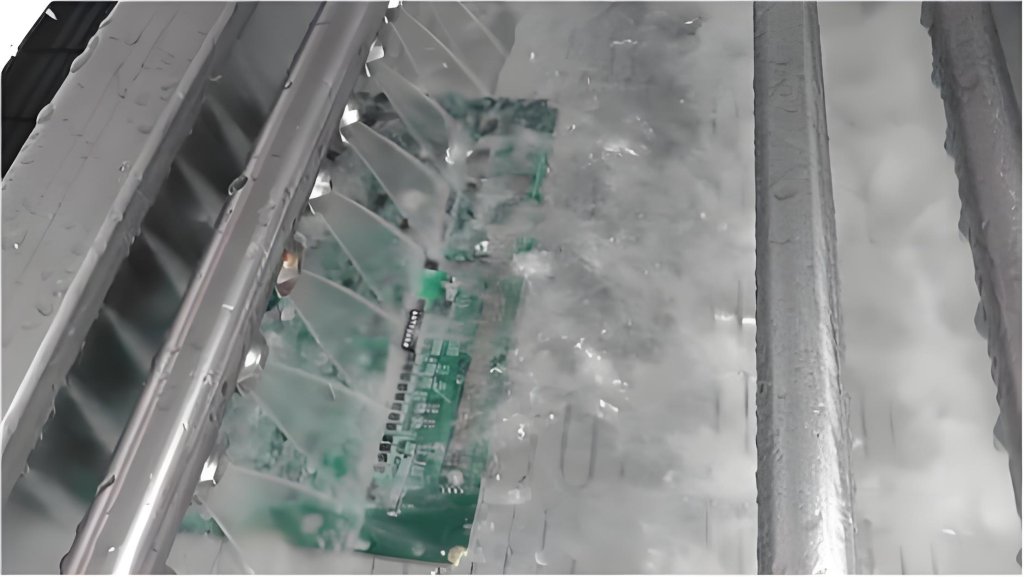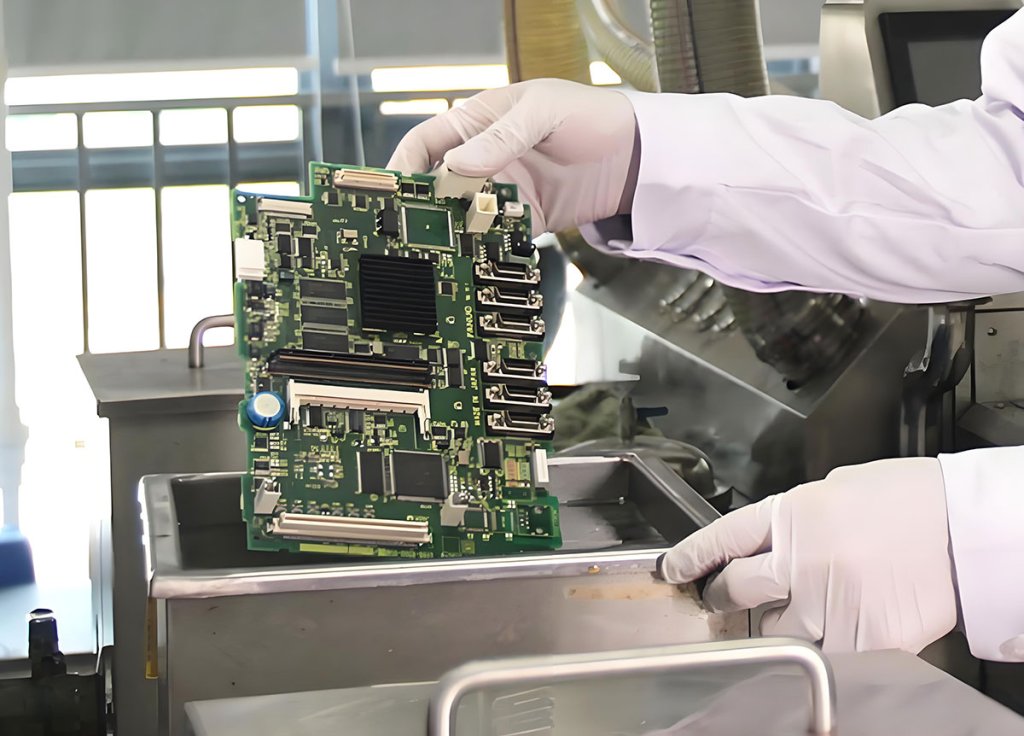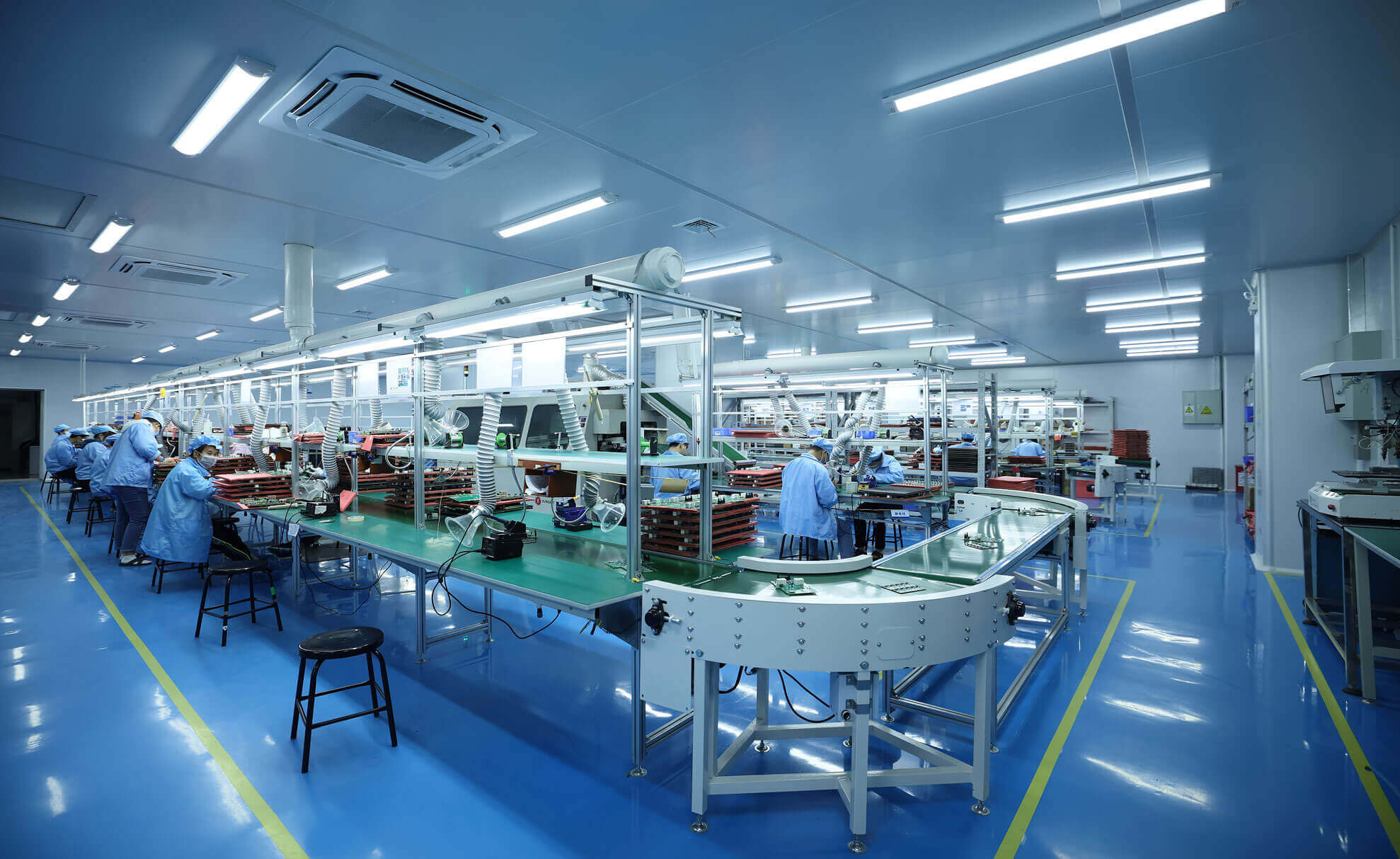Being a PCB design or fabrication enthusiast, your mind always asks questions. And this time, you are wondering how to clean a PCB board in manufacturing. If yes, you are at the right place because here we are going to discuss everything about cleaning PCB during manufacturing.
Whether it’s a newbie or an experienced PCB designer, this guide will help you understand the science of PCB cleaning before manufacturing.
So, let’s forge ahead.
The Importance of Cleaning PCBs During Manufacturing

Cleaning PCBs (Printed Circuit Boards) during manufacturing is crucial for ensuring optimal performance and reliability of electronic devices. It is a crucial step to make sure that devices bring in the best performance and reliability.
Residues and contaminants left behind during the manufacturing process can interfere with the functionality of the PCB and compromise its electrical performance and solderability.
In addition, clean surfaces on the PCB facilitate better solderability. Solder joints are made with more excellent reliability and uniformity on clean surfaces without solder defects such as bridges, voids, and poor wetting.
This improves the general quality and reliability of the solder connections, which are critical for the effectiveness of the electronic device.
So that is why it is important to clean a PCB during manufacturing. But how is it possible? What are the methods used for cleaning PCBs? Let’s discuss all this in detail.
PCB Cleaning Methods
There are 3 most common PCB cleaning methods used in manufacturing:
1.) Solvent-Based Cleaning:
Solvent-based cleaning uses organic solvents such as Isopropyl Alcohol (IPA) or Acetone to dissolve flux residues and contaminants from PCB surfaces. These solvents are effective at breaking down and removing a wide range of organic substances commonly found in flux residues and other contaminants.
While solvent-based cleaning can be highly effective, it’s essential to handle these chemicals with care and dispose of them properly to prevent environmental contamination.
2.) Aqueous (Water-Based) Cleaning:
Aqueous cleaning—deionized water is used with additives to clean liquid residues, particularly water-soluble flux. This process is favored for environmental consideration over solvent-based cleaning methods.
water-based cleaning agents improve the removal performance with minimal need for harsh chemicals. Apart from that, water-based cleaning systems could, in the long run, be more energy-efficient and cheaper.
However, proper treatment of wastewater must ensure that the removed impurities by cleaning are disposed of without harm to the environment.
3.) Ultrasonic Cleaning:
Ultrasonic cleaning combines the power of waves and a cleaning solution to extract contaminants trapped below components onto the surface of the PCB.
Ultrasonic waves are responsible for the high-frequency sound waves that create millions of tiny bubbles in the cleaning solution. As these bubbles collapse close to the surface of the PCB, they generate microscopic scrubbing action, which loosens and removes the contaminants.
This method is quite effective for the dental industry since it is compatible with cleaning complex geometries or densely populated PCBs. In these cases, manual cleaning may be complex and unwieldy. The ultrasonic energy can access areas that would not otherwise be readily accessible because of extremely tight spaces.
Now you must be wondering how to choose the right cleaning method. Let’s discuss this below.
Choosing the Right Cleaning Method
Selecting the appropriate cleaning method for PCBs depends on various factors, including the type of flux used, board composition and surface finish, level of contamination, and environmental and safety considerations.
Here’s a guide to help you make the right choice:
1.Type of Flux Used:
Water-Soluble Flux: When water-soluble flux is used, the most common cleaning method used is the aqueous (water-based). The water-based cleaning technique is done so that the residues of the water-soluble flux are removed and no harmful contaminants are left.
Additionally, water-based cleaning is environmentally friendly and not as dangerous as solvent methods.
Non-Water-Soluble Flux: With non-water-soluble fluxes, for example, rosin-based or no-clean fluxes, it is better to use solvent-based cleaning. Residues from non-water-soluble fluxes can dissolve and be cleaned by organic solvents, for instance, Isopropyl Alcohol (IPA) or Acetone.
Again, precautions, including proper ventilation, should strictly be adhered to with solvent-based cleaning methods because exposure to such kinds of solvents poses health hazards.
2.Board Composition and Surface Finish:
Consider the material composition and surface finish of the PCB in selecting a cleaning method since some cleaning agents may be incompatible with certain materials or surface finishes, thus bringing about damage or corrosion.
For example, most PCB materials and surface finishes are accepting of gentle cleaning methods, such as those that are water-based.
On the other hand, some surface finishes should never be cleaned by aggressive cleaners or ultrasonic cleaning because they might not be gentle enough toward sensitive components or surface materials.
3.Level of Contamination:
The degree of contamination in the PCB will be decisive of the cleaning that needs to be carried out.
In the cases of light to moderate levels of contamination of the PCB, mild cleaning techniques, for example, water-based cleaning or wiping the board with swabs soaked in a solvent, can be applied.
Very dirty PCBs with strong residues or dirt may need aggressive cleaning of the contaminants using ultrasonic cleaning or vapor degreasing.
4.Environmental and Safety Considerations:
In choosing cleaning methods, the aspect of environmental and safety issues also has to be considered salient. Generally, water-based cleaning methods can be said to be the best in terms of being environment-friendly since they produce small quantities of hazardous waste as opposed to solvent-based cleaning methods.
Besides, the availability of adequate natural and mechanical ventilation and PPE should be factored in when using solvent-based cleaning methods to limit exposure to noxious vapors and ensure occupational health and safety.

PCB Cleaning Process
Here’s a general overview of the PCB cleaning process that might help you understand the science behind PCB cleaning for manufacturing:
1.Pre-Cleaning (Optional):
Subsequently, before the primary cleaning process, there might be a provision for removing loose debris and contaminants on the PCB surface through a precleaning process.
It may involve pre-cleaning by brushing the surface of the PCB with a soft brush or using compressed air to blow away all the dirt and litter.
A pre-cleaning step might raise efficacy in the following cleaning process by eliminating the coarse fractions that otherwise could interfere with the process.
2.Cleaning Stage:
This is followed by the actual primary cleaning, where the PCB is submerged in a pre-selected cleaning solution.
In the case of solvent-based, the PCB is submerged into the organic solvent (Isopropyl Alcohol or Acetone) for a specified length at a controlled temperature.
In aqueous cleaning methods, the PCB is exposed to an aqueous cleaning solution with certain additives designed to remove nearly all flux residues and contaminants. Temperature and immersion time are adjusted to assure effectiveness at optimal cleaning.
3.Rinsing:
The rinsing stage of the cleaning process is permissively long in order to thoroughly rinse the PCB after drying and get rid of any remaining cleaning solution or loose contamination.
Rinsing is usually carried out with deionized water to prevent the dissolution of more contaminants. Rinsing can be done more than once to complete the cleaning process.
4.Drying:
Once rinsing is complete, the PCB is dried to remove any remaining moisture and prevent oxidation of metal surfaces.
It may be dried by forced hot air or by setting the PCB inside a drying oven at a controlled temperature.
Proper drying is necessary to avoid streaks or spots of water freezing on the surface of the PCB, where they might affect the integrity of solder joints.
5.Inspection:
After drying, the PCB undergoes visual inspection under magnification to verify cleanliness and identify any remaining contaminants.
Inspection can also be carried out with electrical tests or other measures for quality control, which would result in the conformation of the PCB to cleanliness standards as specified.
Any residue of contaminations or defect observations are recorded; it may lead to more cleaning or rework, without which the PCB may not be acceptable for further process or assembly.
Through these steps, manufacturers ensure thorough cleaning of the PCBs and freedom from contaminants, hence enhancing the reliability and performance of the electronic device.
Quality Control
Quality control measurements should be taken after the critical cleaning process of PCB to ensure its effectiveness and examine the possible defects in it. Testing will be done, and hence, one can easily verify proper conduction.
This testing ensures that the solder joints, conductive traces, and components function correctly. It is a visual inspection to check the cleanliness and detect defects.
Inspectors then inspect the PCB under magnification for residues, contaminants, or cleaning-related defects. These are documented and addressed at the earliest to eliminate quality issues at a later stage.
All these quality controls ensure that the PCBs are reliable and functional enough to meet the standards required, which would further reduce the risks of flaws and improve customer satisfaction.
Additional Considerations
There are some additional considerations for PCB cleaning that you must know:
Cleaning Equipment:
Specific cleaning methods often require specific equipment. Standard equipment used for solvent-based cleaning includes spray washers and tanks, whereby PCBs are soaked in solvent solutions for cleaning. Some include agitation for better cleaning.
Equipment frequently used for aqueous cleaning is spray washers and batch cleaners, which spray PCBs with water-based solutions to remove residues. For this purpose, ultrasonic baths could help clean complex PCBs.
Waste Disposal:
After cleaning, the disposal of used solutions is done cautiously. The hazardous nature of spent solvent solutions necessitates their careful handling.
For such treatment facilities, spent solvent solutions are transported to the places for recovery and incineration. Aqueous solutions also are to be disposed of properly. They don’t cause severe harm since they have lower toxicity. However, aqueous solutions contain impurities.
Environmental Regulations:
Solvent use and wastewater discharge regulations are essential for the cleaning of PCBs. These rules vary by place and cover things like solvent limits and wastewater quality.
Following these rules is vital to protect the environment. It also shows a commitment to sustainable practices in PCB manufacturing.
Conclusion
In conclusion, proper cleaning of PCBs during manufacturing is required to make electronic devices perform with optimum functionality and reliability.
A systematic cleaning process followed by quality control measures can ensure that PCBs meet the required standards related to reliability and functionality, thereby connecting customer satisfaction.





